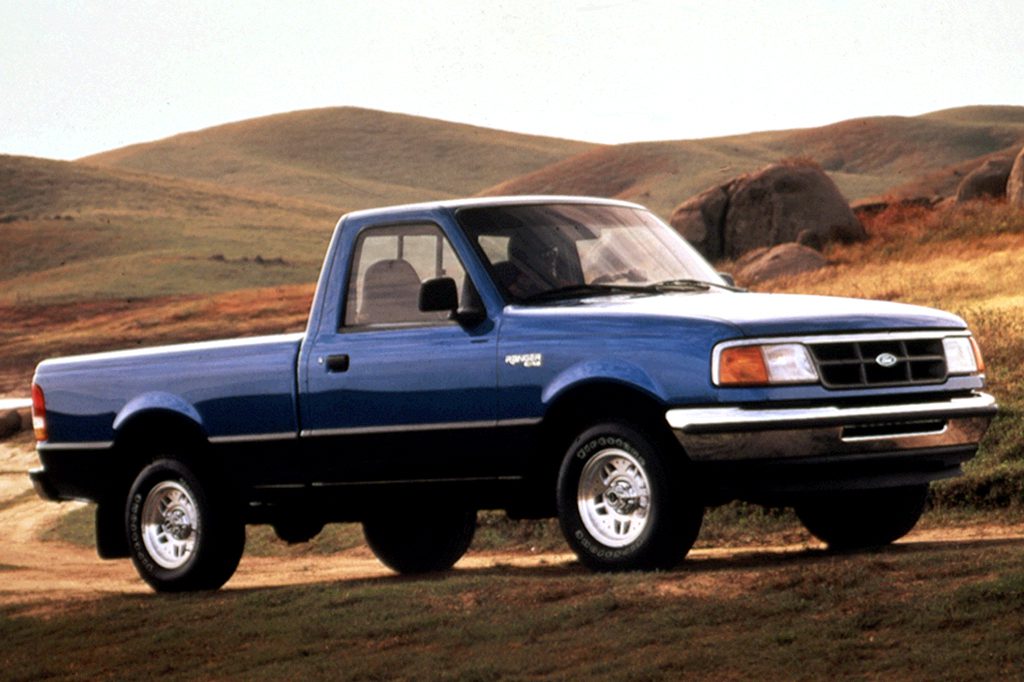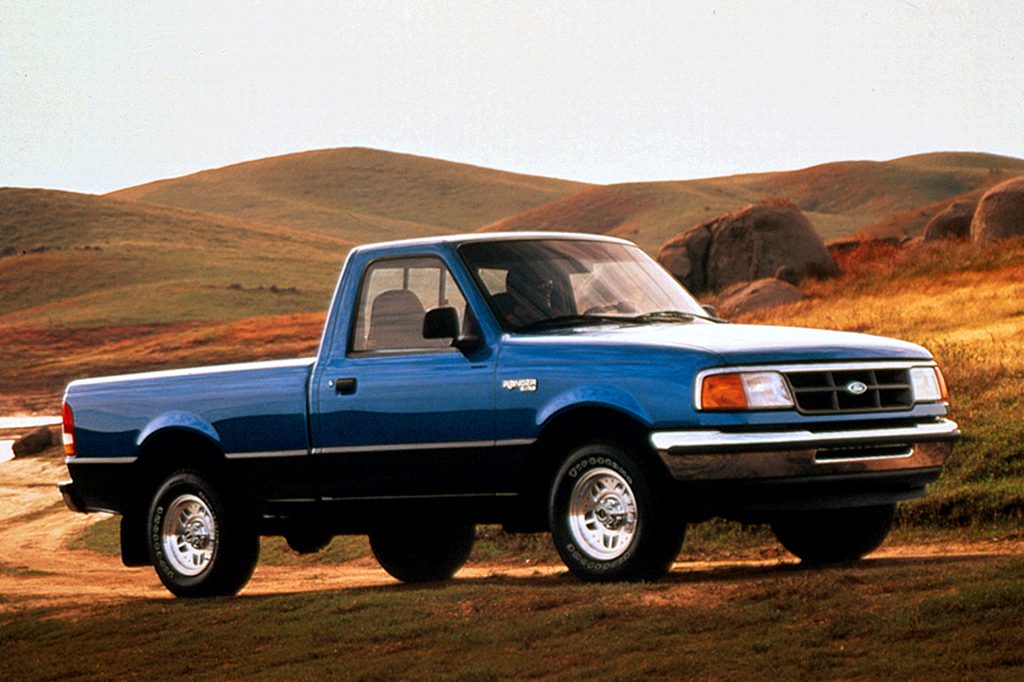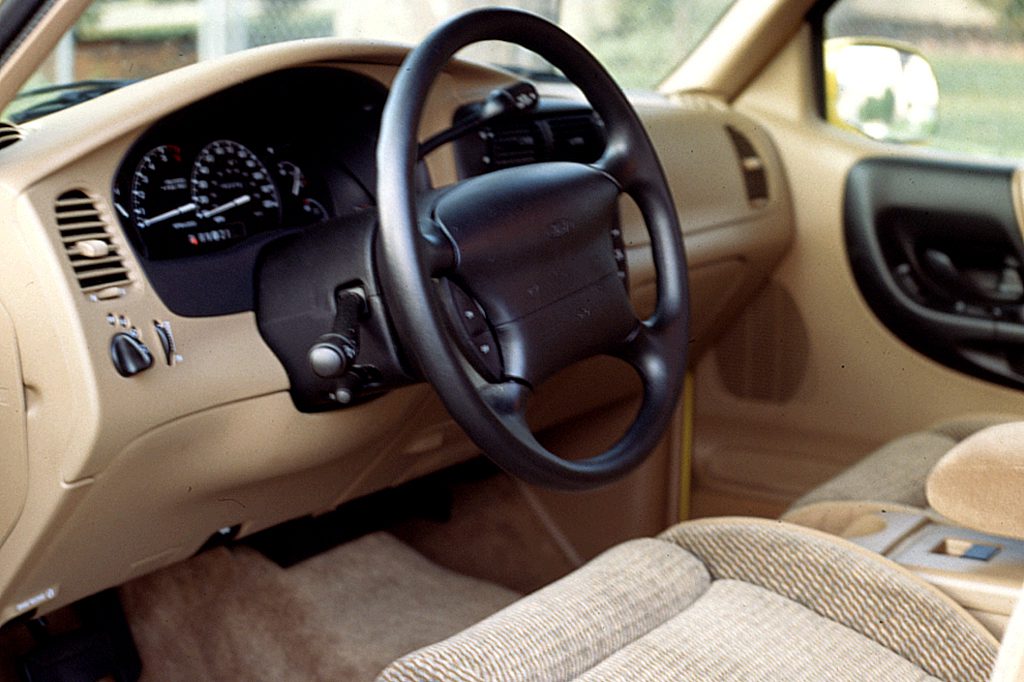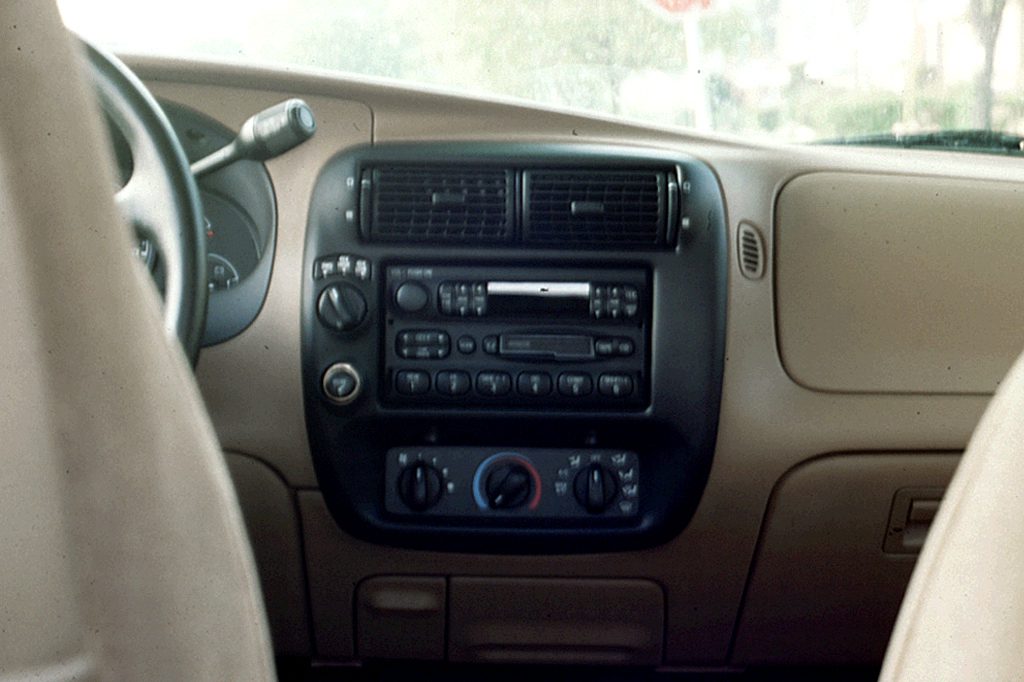| Compact pickup truck; Built in USA |
|
|
| Good condition price range: $1,300 – $3,200* |

1993 Ford Ranger XL Sport SuperCab extended cab

1993 Ford Ranger STX 4WD regular cab

1994 Ford Ranger regular cab

1995 Ford Ranger Splash interior

1995 Ford Ranger Splash interior
| Pros: |
|
| Cons: |
|
Ford sought a more carlike look and feel for its Ranger–and succeeded. Some rugged truck characteristics may have been gone, but we view the changes as improvements. Ranger remained one of the best in its class, but we recommend that you shop all three domestic brands–including the Dodge Dakota and Chevrolet S-Series–before deciding.
Overview
Ford restyled its compact pickups for 1993. Wheelbases and cargo-bed sizes and engines were unchanged for the reworked Rangers, but overall body lengths grew by 4.5 inches and rear tracks were 1.4 inches wider. Center high-mount stoplamps were added. All models could be ordered with either 2- or 4-wheel drive. For the first time, 4WD Rangers got a unique grille and front valance panel, fender flares, and standard 15-inch tires. Rear antilock brakes again were standard, operating only in 2-wheel drive. A 3-place bench seat was standard and bucket seats were optional. SuperCabs could have an optional pair of fold-down rear jump seats. Engines were the same as before: a 2.3-liter four, and 3.0- and 4.0-liter V6s. Five-speed manual transmissions were standard and 4-speed automatics optional.
Yearly Updates
| 1994 Ranger Pickup For 1994, an extended-cab (SuperCab) Splash joined the regular-cab lineup. Starting this year, Mazda dealers began to sell a variant of the Ranger as the B-Series. |
| 1995 Ranger Pickup Rangers gained a fresh interior complete with a driver-side airbag, plus a new grille and 4-wheel antilock brakes for both 2- and 4-wheel-drive models. The base 4-cylinder engine jumped from 98 to 112 horsepower, and extended-cab models could be fitted with a power driver’s seat. |
| 1996 Ranger Pickup An optional passenger-side airbag was added for ’96, complete with a key-operated disabling switch–a “first” in the industry. XL and XLT models could now be ordered with the flare-fender cargo bed. |
| 1997 Ranger Pickup A new 5-speed automatic transmission, derived from last year’s 4-speed unit was added as a new option for Rangers equipped with the 4.0-liter V6. |
